- News
- Reviews
- Bikes
- Components
- Bar tape & grips
- Bottom brackets
- Brake & gear cables
- Brake & STI levers
- Brake pads & spares
- Brakes
- Cassettes & freewheels
- Chains
- Chainsets & chainrings
- Derailleurs - front
- Derailleurs - rear
- Forks
- Gear levers & shifters
- Groupsets
- Handlebars & extensions
- Headsets
- Hubs
- Inner tubes
- Pedals
- Quick releases & skewers
- Saddles
- Seatposts
- Stems
- Wheels
- Tyres
- Tubeless valves
- Accessories
- Accessories - misc
- Computer mounts
- Bags
- Bar ends
- Bike bags & cases
- Bottle cages
- Bottles
- Cameras
- Car racks
- Child seats
- Computers
- Glasses
- GPS units
- Helmets
- Lights - front
- Lights - rear
- Lights - sets
- Locks
- Mirrors
- Mudguards
- Racks
- Pumps & CO2 inflators
- Puncture kits
- Reflectives
- Smart watches
- Stands and racks
- Trailers
- Clothing
- Health, fitness and nutrition
- Tools and workshop
- Miscellaneous
- Buyers Guides
- Features
- Forum
- Recommends
- Podcast
news
RideLondon was cancelled? Hold my Foster’s: Aussie sportive called off an hour before start – because traffic firm didn’t show up after getting dates wrong; Ineos “rearranging deckchairs on the Titanic”; “Gibberish” safety stats + more on the live blog
SUMMARY
 Bowral Classic 3
Bowral Classic 323 October 2024, 13:56
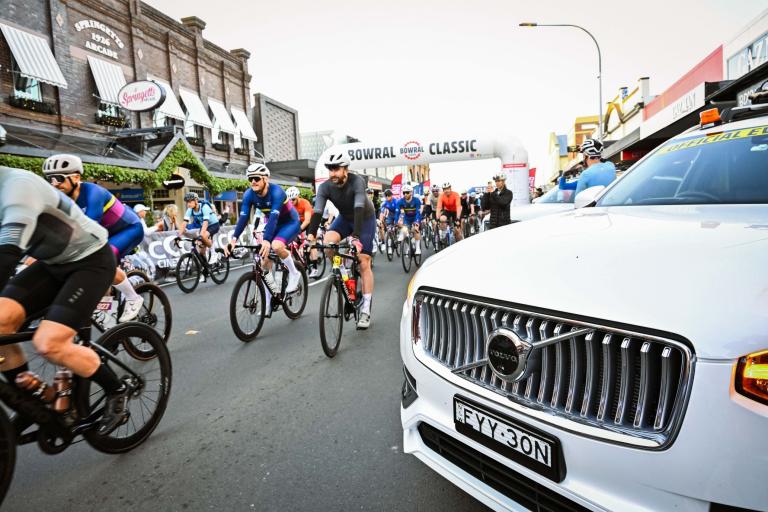
‘Oh, so RideLondon was cancelled? Hold my tin of Fosters’: 3,000 cyclists left stranded after massive Australian sportive cancelled an hour before it was due to start – because traffic management contractor didn’t show up after getting date wrong
Just when you thought those who had secured their early bird tickets for the now-hiatus impacted 2025 edition of RideLondon have a right to feel aggrieved, over in Australia sportive enthusiasts were left “devastated” after one of the country’s biggest leisure events was cancelled an hour before it was due to start – because a key traffic management contractor simply didn’t show up.
The Bowral Classic in the Southern Highlands is a fixture of the New South Wales cycling calendar, raising over $500,000 (£260,000) for charity since 2016, and attracting around 3,000 cyclists from across Australia to take on its choice of 150km, 120km, or 85km rolling routes.
However, with the grand fondo set to get underway at 6.15am on Sunday, a social media post from the organisers at 5.17am announced that the whole thing had been called off, thanks to what those behind the Bowral Classic described as a “mind-boggling human error”.
“Our traffic management partner – an important partner we have worked with for several years – simply didn’t show up,” the organisers said.
“The traffic management for the Bowral Classic is a huge operation, with over 100 traffic marshals coming from across the Southern Highlands, Wollongong and Sydney. Without them on course, the event could not proceed safely.
“Our traffic management contractor has told us there was a date stuff up. Given the reams of communications and approvals necessary, we are shaking our heads in disbelief. Suffice it to say we are not letting the matter rest there.”
Altus Group, the event’s contracted traffic management provider, later issued a statement accepting responsibility for the error, confirming – rather remarkably – that the date of the sportive was noted down wrong in their calendar.
“The Bowral Classic event was cancelled today due to the Altus Group having planned for the event to occur the following weekend,” the statement said. “This was an indefensible error that has negatively impacted a large number of people and for which we are profoundly sorry.
“While this is the first time in over 20 years and among 1000s of supported events that we have made such an error, it is nevertheless unacceptable.”
A “heartbroken” James Yaffa, the Bowral Classic’s founder, said his team was working hard to refund the registration fees of all participants, which ranged from $165 to $315, not counting travel and accommodation costs, of course.
Despite the cancellation, many of those who turned up still decided to ride the course anyway, albeit without the accompanying road closures, signage, or support.
“We’ve been training for three months. I’m devastated because we’ve been looking forward to it,” Clarissa Phillips, who was minutes away from arriving in Bowral when she heard of the last-minute cancellation, told the Sydney Morning Herald.
“I’m in a triathlon club and we had about 15 people training for this. One guy I met came from Brisbane.”
“I thought it was a prank at first, and then we were all in our cars trying to work out what to do next,” Sydney-based cyclist Jason Robertson said.
“Almost everyone decided to ride anyway. But it was chaotic at times. They took down all the signs so we had no directions on where to go, and we had people going left, right, and every which way.”
Nevertheless, in a bid to salvage at least some of the day, the sportive organisers kept the event village open, offering free food, entertainment, and a special guest appearance by Aussie Olympic team pursuit gold medallist Conor Leahy.
“Hats off to the organisers for offering a full refund and providing free (which was such a great gesture) food for all at were at the village,” seven-time Bowral Classic participant Diego Canvero wrote on social media after the cancelled event.
“While we as participants were disappointed with the cancellation, it still looked and felt like the Bowral Classic 2024 took place for me and many others! Thank you.”
“I still had a fantastic day! Beautiful countryside, lots of smiles, catchups with friends, sunshine and free food and drinks at the end! What’s not to love?” added Julie-Anne Hazlett from VéloRoo’s Cycling Tours.
“The atmosphere was great, the Bowral Classic team did a fantastic job at making sure those that were there enjoyed themselves!”
Let’s just hope the traffic management contractor turns up next time, and it’ll be even better.
23 October 2024, 09:18
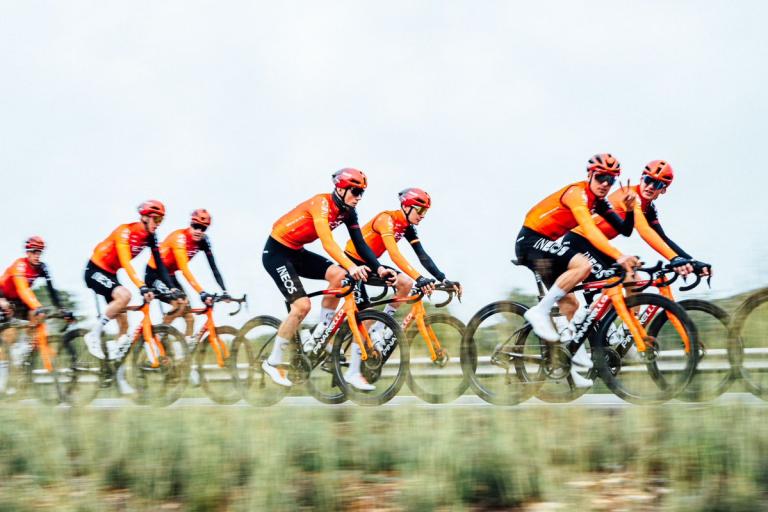
“Ineos seem to love a review”: Ineos Grenadiers announce new staff and performance structure changes after turbulent season – but fans say latest overhaul “like rearranging the deckchairs on the Titanic”
I wonder if Sir Jim Ratcliffe will ever get round to running a sporting organisation that isn’t in need of constant “thorough” reviews, structural overhauls, or management changes (well, I suppose the sailing team is doing pretty well, but still).
After a pretty turbulent few weeks – even by their own chaotic recent standards – which have seen Tom Pidcock’s future thrown in the air after the Olympic champion was dropped at the last minute from Il Lombardia, along with a few withering parting shots from the outgoing Ethan Hayter, last night the Ineos Grenadiers announced new structure and staff changes ahead of next season.
These changes, the under pressure British squad say, were based on a “thorough review of the team’s performance operations” carried out over the last six months by performance director Scott Drawer, in an attempt “to build on the strong foundations and team already in place and support the objective to win the biggest races in cycling”.
(Elliot Keen/British Cycling/via SWpix.com)
Among a string of new staff appointments, the highly-rated former Sky and CSC pro Kurt Asle Arvesen joins as a sports director, as does recently retired racer Leonardo Basso, whose freelance DS role this year has been upgraded to a permanent one.
Meanwhile, Dr. Mehdi Kordi, the British track and sprint specialist and brains behind the Dutch squad’s phenomenal success at the Paris Olympics, joins as head of performance support and innovation.
According to Ineos, this new structure will focus on “three distinct performance streams – Grand Tours and Stage Racing, Classics and One Day Racing, and Future Talent. There will be a renewed focus on specialist coaching in time trials, sprint, and power development, endurance training science, race strategy, aerodynamics, and technology development.”
So, cycling then.
Meanwhile, there has been no official confirmation about any outgoings, though head mechanic Diego Costa (not the former Chelsea forward and shithousery specialist, unfortunately) announced this morning that he’s leaving the team after two stints with Sky/Ineos.
More new staff will apparently be announced in early 2025, including a new head of engineering and technology, replacing the Red Bull-Bora-bound Dan Bigham.
“I’ve spent six months listening, observing, and working with the team to determine what's needed to set ourselves up for excellence for 2025 and beyond. I’ve been looking at every element of how we race, how we train and how we support our riders in the changing landscape of professional cycling,” performance director Drawer said in a statement.
“We have a highly motivated, hungry and ambitious team of coaches, sport directors and performance specialists who want to create an environment that allows our riders to fulfil their potential. That collective energy and desire will set us up for the challenges and opportunities that await in 2025.
“We are going to spend the rest of this year making further positive changes: setting the team’s performance plans and goals, executing some key training camps and getting the whole team ready to race hard in January. We want to set the right tone from the start and will be working closely with our riders to establish the culture which will facilitate success and be fundamental to our future.”
(Will Palmer/SWpix.com)
However, while the Ineos diehards are optimistic that these changes will turn things around after a difficult and turbulent season, others aren’t as convinced.
“Step in the right direction but change starts at the top. Can you truly change with the management and the same system behind?” one fan asked on social media.
“Ineos seem to love a review,” added Sean, while Stuart described the team as the “most dysfunctional senior management in cycling. And that is really saying something.”
“Instead of the blah, blah, blah, what about winning again,” piped up Simon.
“It’s the language of corporate reorganization,” said Five Shoes. “Simplified reporting lines, quarterly performance reviews, agile. Only a matter of time before they start talking about the cycling calendar as Q1, Q2, Q3, Q4.”
It really is only a matter of time, isn’t it?
(Elliot Keen/British Cycling/via SWpix.com)
“This just feels like an announcement for a managed decline as much as a structure change,” says J. “Which would be fine if the team was less bloated and had a focus instead of how it is now.”
“No mention of improvement in attitude towards riders (though could be said that’s been an issue off and on for over a decade),” noted Lynne.
Meanwhile, cycling YouTuber Benji Naesen said: “Curious to see what these changes bring to Ineos, but I feel like it's going to require more than structure and staff changes to turn the ship around.”
“One thing it might change would be in terms of recruitment though, must have been very hard to get anyone good to join from the outside when it looks like a sinking ship, it might looked like a patched up sinking ship now,” wrote Elias.
Continuing on the nautical theme, Charlotte added: “It does feel a bit like rearranging the deckchairs on the Titanic. But these are good people for sure and they might be able to make a difference.”
Well, the proof is in the 2025 pudding (or the ship), I suppose…
23 October 2024, 15:23
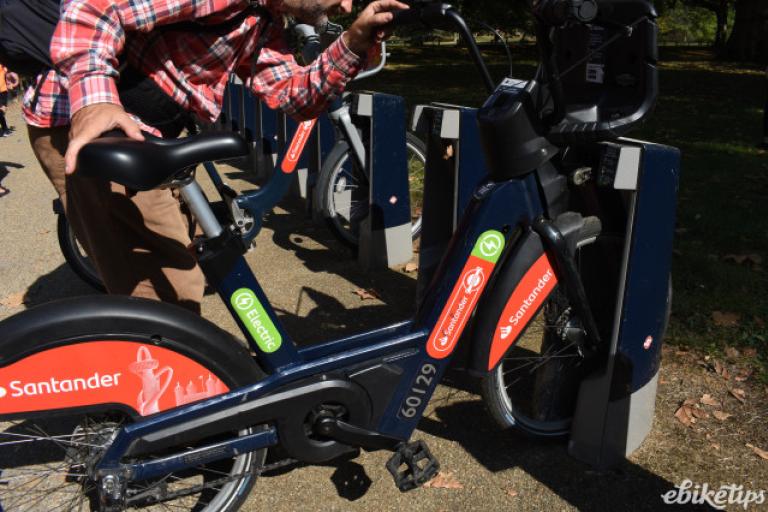
“We’re an alternative to the selfish customer who wants to leave their bike anywhere and make it somebody else’s problem”: Boris Bikes set for “game-changer” upgrade as Transport for London aims to double e-bike fleet to counter dockless Lime challenge
In more Transport for London cycling news, the local government body has unveiled plans to upgrade its ‘Boris Bike’ hire scheme by doubling its e-bike fleet to 4,000, in a bid to quell the dockless private hire bike challenge of recent years.
While there are believed to be 20,000 of Lime’s instantly recognisable lime green e-bikes in London, along with 10,000 Forest bikes, TfL’s Santander Bikes currently number 12,000, only 2,000 of which are e-bikes, first introduced in 2022.
Now TfL aims to increase the number of its e-bikes to 4,000, a move it believes could be a “game-changer” for the scheme, while cutting the cost of manually replacing out of charge batteries and highlighting the Santander bike’s “good neighbour” credentials as concerns mount about their dockless rivals blocking pavements.
“I’m quite clear the Santander scheme is here to stay in its present form,” TfL’s head of cycle hire David Eddington told the Standard.
“We can’t deny that the numbers have dropped. I would be taken for a fool if I said dockless bikes had not had an impact. They have eaten into our market. But it makes us more competitive.
“What we offer is a safe, well-managed, considerate scheme – a docked scheme. People know where they have to go to get a bike, and where they have to be left.
“We provide an alternative to the more selfish customer who wants to leave their [dockless] bike anywhere and make it somebody else’s problem.”
23 October 2024, 15:57
Speaking of TfL’s plans to challenge the emerging Lime supremacy…
Am I being gas lit by @limebike that this isn't a deployment at Balham?
These are neatly set out each day facing the same way.
Trying to work with you to make this work but let's play fair. pic.twitter.com/RrdkYyIy76
— Jo ❤️ Balham (@JoRigby_Balham) October 22, 2024
23 October 2024, 14:57
Colchester strikes again… but this time not for its rogue cycling fine wardens, surprisingly
23 October 2024, 08:09

Former transport officer’s “cherry-picked” claim that cycling in the Netherlands is more dangerous than the UK slammed as “gibberish evidential gymnastics” aimed at those who “still view bikes as toys in a grown-up world of big choo-choo machines”
A recent claim made by a transport watchdog’s former streets policy officer that cycling in the UK is now safer than in the Netherlands, a development that apparently contradicts cycling activists’ desire to ‘go Dutch’, has been criticised as “statistical cherry-picking”, “gibberish”, and “evidential gymnastics” by a member of the London Cycling Campaign.
In an opinion piece for Local Transport Today, retired Hackney councillor Vincent Stops argued that recent “pressure” from UK cycling campaigners to emulate the Netherlands’ approach to road safety has been misguided and flawed.
Stops claimed that instead of copying the Dutch method, which he says has seen a rapid rise in cycling injuries and fatalities in recent years, and which has led to “all manner of confusing road layouts appearing across Great Britain”, the UK’s transport authorities should revert to “data-led road safety interventions we know work”.
Stops, you may recall, is a retired Hackney councillor and the local authority’s former lead member for transport, who worked on streets policy for London TravelWatch, the capital’s statutory transport watchdog, for over 20 years.
In a blog post in 2022, he labelled cycling in the capital a “ruthless and well-resourced minority interest” that has “been allowed to ruin London’s bus service” (despite claiming that he “cycles everywhere”), and last year also argued that protests held in the wake of fatal collisions were “distasteful” and “putting people off cycling”.
In his latest post on Local Transport Today, the former streets policy officer said: “The surge in cycle activism during the 2010s was driven by blogging and social media campaigning, at the heart of which was the belief that in the Netherlands there was much more cycling, and that it was safer, per kilometre cycled.
“The London Cycling Campaign adopted the strap line ‘Love London, Go-Dutch’, which meant, essentially, inserting cycle tracks into London’s streets. However, 15 years on, Dutch cycle safety does not seem to support their thesis. In fact, the scale of cyclist fatalities in the Netherlands is staggeringly high and particularly so in the last two years reported.”
In what he called a “forensic examination” of the evidence Stops noted that cycling fatalities last year in the famously bike-friendly Netherlands (270, compared to 87 in the UK) were “12 times the fatalities per million population!”
However, he did also note the Netherlands’ much higher cycling mode share – though pointed to recent stats that suggest fewer people are killed in Britain per billion kilometres cycled than in the Netherlands (15.0 compared to 15.6). This rising mortality rate, Stops said, could be linked to the increasing use of e-bikes, especially by older people.
“The health benefits of cycling outweigh many times the statistically small chance of death and injury to individuals, therefore public policy rightly aspires to more and safer cycling. But the assumptions that are made by the new cycle activism should be challenged, and in particular suggesting that the Netherlands has all the solutions,” Stops continued.
“As you see, the Netherlands is grappling with cycle safety too. A question for us is whether GB should carry on as we have been, trying to emulate the Netherlands? We see e-bikes being heavily promoted in the UK these days. Should we carry on regardless under pressure from cycling activism? Or should we revert to data-led road safety interventions we know work?
“We see all manner of confusing road layouts appearing across GB, whereas we know that safer road layouts should be intuitive, understandable, and self-explaining.
“I welcome the new Transport Secretary Louise Haigh embarking on a fresh road safety strategy. A forensic examination of how we are doing would be helpful.”
However, in a rebuttal piece penned this week by the London Cycling Campaign’s head of campaigns and community development Simon Munk, who’ll be appearing on the road.cc Podcast this week to discuss all things culture wars, branded Stops’ “forensic examination” of the evidence “gibberish” and “statistical cherry-picking” designed to stop the introduction of cycling infrastructure.
Munk argued that Stops’ stats ignore “the hugely different demographic profiles of cycling in these countries, the differing reasons why fatalities occur in both countries, and that tying risk of cycling to very rare fatalities is not a good idea, statistically”.
Pointing out that when comparing actual fatality rates for cyclists, there are double the number killed per kilometre on UK roads compared to the Netherlands, he continued: “Using serious collisions as well would result again in a different result, and one that Stops has clearly chosen not to provide. The simple reality is cycling in the Netherlands is far safer than it is here.
“Stops throws in more stats but, ultimately, his evidential gymnastics just aren’t right. The Netherlands is far safer to cycle in than the UK, in part because, as international studies have shown repeatedly, cycle tracks work and not just for safety, but also to enable a far higher number of people and wider range to cycle for a wider range of journeys.”
However, Munk also noted that “sadly, the views expressed by Stops are all too common in the transport industry. My concern is that his standpoint finds at least some sympathetic ears among those who still seem to view bicycles as toys in a grown-up world of big choo-choo machines.
“The transport industry cannot legitimately keep insisting that of course we all want more cycling as we face crises of climate, inactivity, road danger, congestion, pollution, community severance, and more, if every scheme comes down to an argument about whether cycle tracks are safe and how to even design them. That’s not to mention the behind-the-scenes bunfight every scheme faces for capacity.”
Finally, he concluded: “The one thing I agree with Stops on is that I also welcome the Government ‘embarking on a fresh road safety strategy. A forensic examination of how we are doing would be helpful’.
“I can only hope any government ‘grown-ups in the room’ involved in that examination won’t use cherry-picked stats to make a hackneyed anti-cycling case, but instead seek to find ways to deliver on pressing issues we all face, using evidence and best practice.”
23 October 2024, 12:56
Transport for London set to begin 11-month-long construction programme to make Battersea Bridge area “safer for people walking and cycling”
Over a year after 200 cyclists gathered at London’s Battersea Bridge to call for it to be made safer for people on bikes, in the wake of a 27-year-old woman’s tragic death in a collision with a hit-and-run lorry driver, Transport for London has confirmed that work is set to get underway to improve safety conditions for cyclists and pedestrians and “reduce road danger” in the area.
The construction work on and near the bridge, which will begin on 1 November and last for 11 months, will include improvements to pavements and traffic signals, as well as changes to the road layout at several junctions along Battersea Bridge Road on the south side of the river, and at the Cheyne Walk junction on the north side.
The works form part of TfL’s ‘Safer Junction’ programme, which aims to improve safety in areas across London with higher-than-average collision rates and to protect bus journey times along the Battersea Bridge corridor.
The changes, which were consulted upon in late 2022 and early 2023, include the installation of a new protected cycle lane at the junction of Battersea Road and Cambridge Road, amending traffic lane widths over Battersea Bridge to make it safer for cyclists, installing ‘cycle-friendly’ gullies, and 11 new pedestrian crossings and cycle signals.
In a statement announcing the works, TfL said it brought forward plans to improve safety on the bridge following a passionate campaign, led by local journalist Rob McGibbon and other groups, after the tragic death of Jack Ryan on Battersea Bridge on 13 January 2021.
> Mass protest calls for Battersea Bridge to be made safer for cyclists
The first phase of the work on the north side of the bridge was completed in November 2021 and included a new pedestrian crossing, wider pavements, and a new lower speed limit of 20mph.
"We are committed to Vision Zero, the Mayor's goal to eliminate death and serious injury from the transport network, and these changes will play a vital role in reducing danger at this key junction,” Penny Rees, TfL's Head of Healthy Streets Investment, said.
“I would like to thank local safety campaigners, including journalist Rob McGibbon, and the local community for working with us to develop these proposals. We have seen large reductions in collisions at other junctions where we have introduced similar improvements, and hope these works will make a real difference to the safety of people walking and cycling in the local area.”
> “Cyclists have no place on Battersea Bridge” – an unwelcome glimpse of how some drivers see us
Will Norman, London’s Walking and Cycling Commissioner, added: “Making London’s roads safer is the Mayor’s and my highest priority and it is vital in enabling more people to choose walking and cycling. I’m delighted that the work to improve safety around Battersea bridge will be starting in November.
“These important upgrades will make the roads and junctions safer for all road users, building a better, safer and greener London for everyone.”
23 October 2024, 14:39
Competition Klaxon!
23 October 2024, 13:37
Why don’t cyclists use the loading bay? Oh wait…
Believe it or not, this is one of Belfast’s better ‘protected’ cycle lanes:
This was @deptinfra's flagship cycle lane at one point. Now it's unusable@JohnODowdSF pic.twitter.com/fKM9tzdBoO
— Brian Shannon (@BrianShannon123) October 23, 2024
23 October 2024, 12:19

Eli Iserbyt set to return from cyclocross ban for stamping on Ryan Kamp’s bike… on Saturday – as UCI clarifies week-long ban was for two races, not three
So apparently, to the UCI anyway, angrily stamping on a rival’s bike means you get to spend one pleasant weekend off catching up on Strictly and Wout van Aert’s latest performance in the Flemish Masked Singer.
Earlier this week, we reported that leading cyclocross star Eli Iserbyt – who took out his frustrations on former teammate Ryan Kamp’s rear mech after a crash at an Exact Cross race in Belgium two weeks ago – had been handed a week-long ban for his WWF-style stamp, following a review by cycling’s governing body.
However, while it initially appeared that the Belgian champion would be sidelined for three races – leading to his absence at Essen and Ruddervoorde last weekend, and this Saturday’s upcoming Exact Cross event in Heerderstrand – the UCI last night clarified that the already pretty short suspension actually expires on Friday, and that Iserbyt is free to take part in a full weekend’s worth of mud and tight corners.
Let’s just hope he doesn’t get tangled in another barrier with Kamp on Saturday, then…
23 October 2024, 11:50
Some good news for the British domestic racing scene, for a change
23 October 2024, 11:23

“They’ll only have to sell three pairs of bibs, a long sleeve top, and a cap to recover that loss, chill!”
Yesterday’s news that Rapha has recorded its seventh consecutive annual loss, with that figure almost doubling to £22.7m for 2023-24, has certainly got plenty of you lot talking.
Here are a few of your thoughts on the reasons behind Rapha’s latest troubling financial report, from Threads and the good ol’ comments section, of course:
Lewis: The premium market is becoming more and more saturated every year. The success of the lifestyle line also depended on owning that number 1 spot, which they don’t. The Rapha Club is also being one-upped by more premium or local offerings. Not sure how they can retake the number one spot without a shitload of R&D and/or professional endorsements.
Anke2: Maybe that fashion has finally ran out of steam? Maybe people just don’t want to be seen with the label ‘Rapha’ any longer, looking like a cheap copy of the beautiful, classical St. Raphael jersey of Anquetil?
Ceebee247: Got a lot of Rapha kit, bibs always fit and comfortable, jerseys always nice. However, they seem to have forgotten who their core base is. Most cyclists I know like interesting designs and colourful jerseys. What Rapha have given us this year has been very boring with washed out with extremely insipid colours.
That probably explains a bigger reason for the drop in sales. Most people who spend £100-200 on a jersey aren’t really going to be thinking about the cost of living crisis going on elsewhere.
A case in point is the oil slick jersey which was released recently, sold out in a few days, the bright reds and blue jerseys are sold out. To me this is a prime example of a company telling its clients what they want and not listening to what their client actually wants/buys. Having been around for 20 years you would think they would have sussed that by now.
Aprimrose85: I’ve been wearing Rapha a long time. The sizing went really weird and inconsistent the last few years. Short arm length, baggy and boxy in some products. The Pro Team collection fits great though, but their other stuff you’d be better going to Decathlon. Think commuter garb.
Toffee: While I’m sure the overall marketplace is a major problem, as it is for everyone, it doesn’t help that Rapha charges extortionate amounts for most of its kit. Good quality or not, the price is eye-watering.
Elifianc: Local shops nowadays can easily find their own kit suppliers with similar quality and cheaper price. Shops build their own brand and community.
Bjpark: Everyone here forgetting that part of the Walmart family borrowed a tonne of money and bought it based on speculative valuation. They’ve saddled the company with that debt and never turned a profit since.
Purceus: Wow, who would’ve imagined a large mega company buying them would eventually run them into the ground. Shocked.
Ryan Evans: They’ll only have to sell 3 pairs of bibs, a long sleeve top and a cap to recover that loss, chill!
23 October 2024, 10:23
“We’ll turn the ship around,” says new Ineos sports director Kurt Asle Arvesen
What is it with this Ineos obsession with naval references? I blame Ben Ainslie.
Anyway, one of the people tasked with performing the most momentous of mid-Atlantic U-turns at the Ineos Grenadiers is Kurt Asle Arvesen, the former Sky rider and DS, who is returning to the British squad as its lead sports director for 2025.
A Tour de France stage winner and key lieutenant in Carlos Sastre’s 2008 Tour win at CSC, the Norwegian spent the last two years of his pro career at the newly formed Sky, moving into a coaching and directing role in 2012, before joining Uno-X in 2017.
However, with Uno-X boss Thor Hushovd undertaking his own overhaul, the door was opened for Arvesen to rejoin Ineos amid a series of backroom changes designed to reverse the squad’s stuttering performances over the past few years.
Arvesen at the Vuelta during his Sky days (Graham Watson)
Speaking this morning to Daniel Benson (who else?), Arvesen admitted the Ineos he’s returning to in 2025 is very different to the all-conquering Team Sky he left in 2017.
“There are a lot of new people and new riders. Some of the old faces are still there, like Salvatore Puccio, Geraint Thomas, and Ben Swift. So I’m looking forward to getting to know everyone,” he said.
“They’re doing a good job there now with all the changes they are making, and then on Friday, I have my first meeting with them. From there I need to learn the ropes and get to know all the other sports directors. I know Oliver Cookson, and Christian Knees from before and it’s the same with Dario Cioni and some of the other coaches. I think we need to sit together and make a good plan for how we move forward.”
When asked about any other potential changes at Ineos, particularly the future of under fire racing director Steve Cummings, the 49-year-old said: “That’s a question I can’t answer because I don’t know. I officially start on January 1 with Ineos. I’ll be in meetings and I’m free from my tasks in Uno-X. I will spend the next two months getting to know the team, and with all the incredible people there we’ll turn the ship around.”
He continued: “They’ve not had their best seasons in the last couple of years, so the new approach of going for stage wins, winning races, and one-day races, that’s something fun to be a part of.
“Winning the Tour de France is very difficult with the two guys Jonas Vingegaard and Tadej Pogačar, so we need to give all the talents like Carlos Rodriguez more time. That will make him feel less pressure coming into some of these races where we can have different goals. He will try and be there, and aim for GC where he can but without all the pressure that he might have had in the past.
“If you believe in getting back to the top, then it’s possible. Ineos are an incredible system with all the support and staff members in different areas that they have. I think that it’s possible but it will take time. Everything is compared to the times of Chris Froome and Bradley Wiggins and there are not many teams who have these achievements - there are only a few teams like UAE Team Emirates and Visma-Lease a Bike.
“It’s very hard for Ineos to repeat what they’ve done year after year and it’s really good what they achieved with Bradley, Chris and Geraint. When you compare everything to this, everything is a downfall. But of course, we can do better than 14 wins.
“I think they’ve had a good review of the season and we’ll try and race differently next year, going for one-day wins, stage wins, and giving all the talent the opportunities to go for their own luck. We’ll maybe go away from the way they used to race.”
23 October 2024, 10:57
Just in case you needed any more reasons to hate indoor training…
ZWIFTIE out this week 🚨🚨🚨 pic.twitter.com/qznfRG8U7N
— killow (zwiftie fall) (@killow_) October 22, 2024
23 October 2024, 09:58
ICYMI: The road season’s over, so that means only one thing – time for a new ‘greatest ever’ ranking!
After obtaining a PhD, lecturing, and hosting a history podcast at Queen’s University Belfast, Ryan joined road.cc in December 2021 and since then has kept the site’s readers and listeners informed and enthralled (well at least occasionally) on news, the live blog, and the road.cc Podcast. After boarding a wrong bus at the world championships and ruining a good pair of jeans at the cyclocross, he now serves as road.cc’s senior news writer. Before his foray into cycling journalism, he wallowed in the equally pitiless world of academia, where he wrote a book about Victorian politics and droned on about cycling and bikes to classes of bored students (while taking every chance he could get to talk about cycling in print or on the radio). He can be found riding his bike very slowly around the narrow, scenic country lanes of Co. Down.
Latest Comments
- lesterama 1 sec ago
A friend told me that Gravaa doesn't work with inserts. Visma actually glued their tubeless tyres on to avoid tyre detachments! Sounds like a...
- EddyMax 17 min 44 sec ago
I can’t let that one pass. I have no wish to start another (yawn) Carlton/Hatch/etc debate but it must be recognised that taste in cycling...
- Velophaart_95 19 min 12 sec ago
That was my first thought when I saw, and read it........
- qwerty360 26 min 43 sec ago
My understanding was traffic data also suggests that its actually made driving quicker not slower in Paris....
- Benthic 41 min 56 sec ago
"...pedestrians remain unable to access the site due to safety reasons." Who is causing the danger?
- mdavidford 49 min 13 sec ago
You missed the most important part of the Cycling UK rebrand, which was them taking a side in the cycling cat debate.
- mitsky 1 hour 50 min ago
"... struck by a driver..." http://rc-rg.com
- Rendel Harris 2 hours 2 min ago
That's only for longer journeys; obviously for short trips he employs the sedan chair.
- Tony W. 2 hours 43 min ago
In accordance with the highway code ? bus driver was breaking the speed limit, overtaking a child on a bicycle, he should've as far right as...
- polainm 2 hours 59 min ago
One is permantly in misery mode, the other all blacked out in stealth mode.






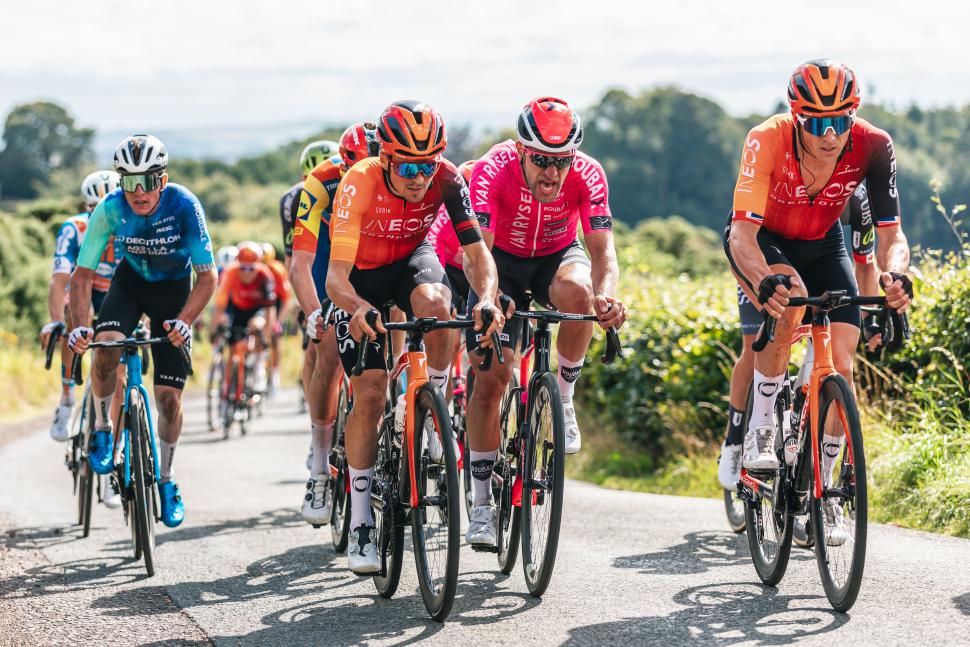
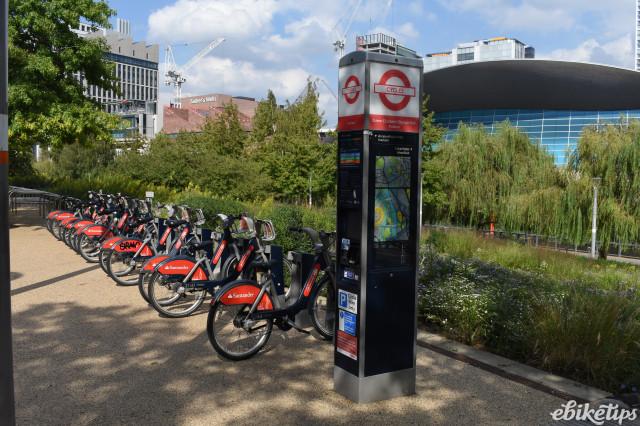




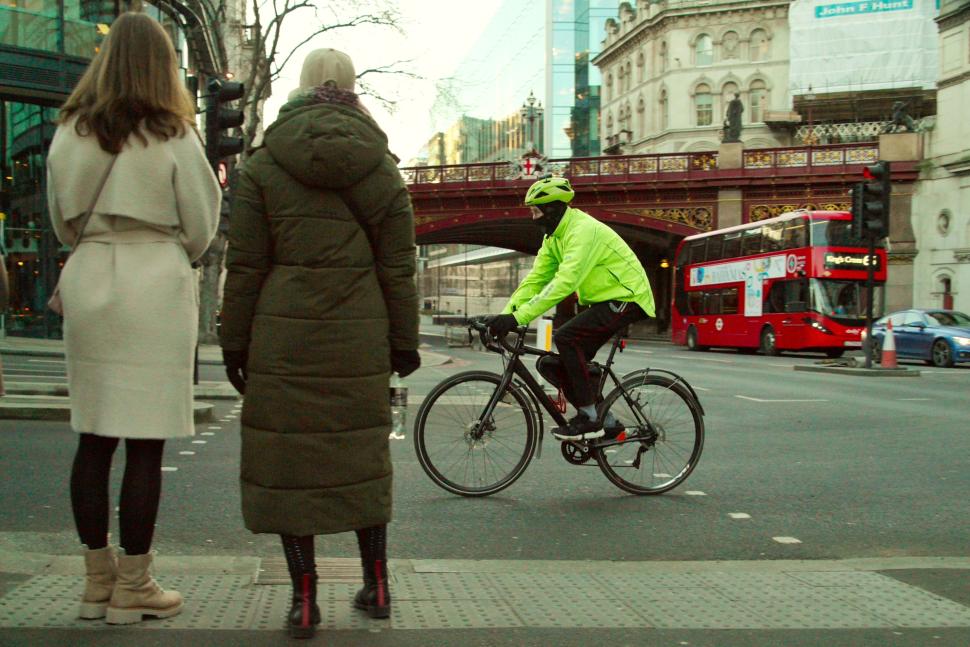



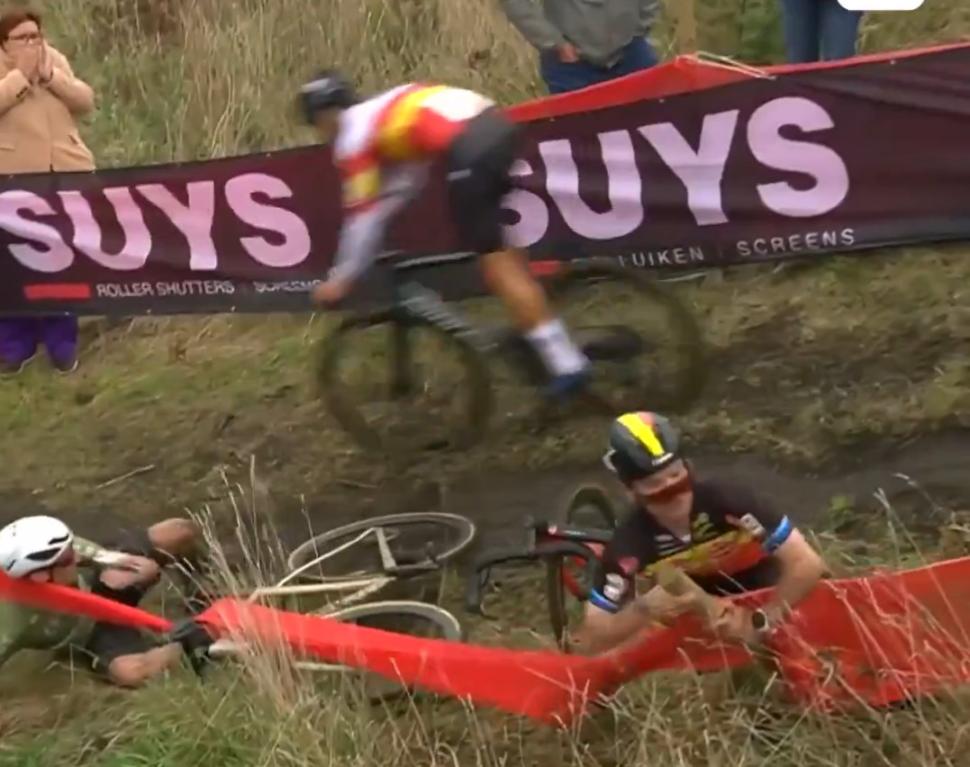






Add new comment
17 comments
Lime Supremacy, was that starring Matt Damon?
Dear Cllr Stops - I am definitely not ruthless or well-financed (but I might be in a minority)
Really? Did you not buy your own bike (and perhaps you even have more than one)? Also ruthless (well, determined): don't you cycle despite the fact that in some places it doesn't feel safe, it's inconvenient etc? And in fact it involves a bit of physical effort, and it can rain outside, be cold, hot ...
Very well - full discloure: I own three bikes.
One is a cheap hybrid I bought thirteen years ago. Two is a not so cheap thirty years old hybrid that I gave a friend £10 for when they were clearing out their garage. And three is an very (for me) expensive city/hybrid type bike that I can only afford to buy because my boss joined a CTW scheme.
Still don't think I count as well-financed…
But but that is all entirely discretionary spending as you don't have to cycle! (Of course you have to pay for a car, or several...)
<slaps forehead> Of course! Cllr Stops was right after all…
Only three bikes - definitely qualifies you as underprivileged.
Well, no - only road cycling.
As a certain Mr P. may have noted.
One more comment on Stops comments..." we see ebikes being promoted heavily in the UK"...um, do we? Where would that be?
Don't leave your cycle boots unattended !
(Came back later for the other one !)
If Vincent Stops is so convinced of the UK being safer for cyclists, presumably he promotes the same to his nearest and dearest and actively encourages them to cycle on public roads and mix with drivers...?
I won't hold my breath.
“still view bikes as toys in a grown-up world of big choo-choo machines”
Brmm-brmm machines, surely?
"A forensic examination of how we are doing would be helpful.”
It would Mr Stops, but conducted by someone who is unbiased and objective i.e. not you.
"...branded Stops’ “forensic examination” of the evidence “gibberish” and “statistical cherry-picking”
Far too kind.
Brmm-brmm machines, surely?
Cars are also on the roads outside of Birmingham.
It's very difficult to know how statitics are being formulated and chosen-from without attempting a generally impossible task of going back to all the relevant basic counts oneself. And even then, the choice of what to regard as the basics to count is itself problematic. For example, how to determine not just "the" cause but all the causes of a collision involving: a bike, an e-bike, a ped, a dog, a car, a van, on a shared path, on an urban street, on a country road, etcetera, etcetera.
For this and many other reasons, I tend to agree with the general opinion that a Blightyland copy of Netherlands cycling infrastructure is not necessarily a best solution for Blighterland.
************
On the other hand, it doesn't need a sophisticated statistical count and analysis to determine that the major contributor to serious traffic collisions everywhere is motorised transporters (their inherent designed nature) and the attitudes - with consequent behaviours - of many of those who drive them.
It therefore seems a very poor solution to build ghettoes for cyclists (so-called cycling infrastructure) when such ghettoes cost a fortune, do a lot of environmental damage added to that done with road contruction and introduce new problems of cyclist-pedestrian interactions. (The recent Dutch increase in cycling collisions and damages seems to be due in part to these). A solution with a far wider set of beneficial effects would be to make the roads far safer by limiting the opportunities and inclinations of motorised transport and their bad drivers to run amok.
E-bikes are limited in their assistance to speeds of 15.5 mph, on the grounds that higher assisted speeds will be more dangerous, especially for those who are "normal" rather than sporting cyclists. Why does the same approach not apply to cars? A limit of 50 mph maximum, with lesser speeds auto-applied via a computer chip in car, van or lorry in urban and other such areas is easy to design and implement .... apart from politically.
A driver is tested for competance before being let loose on the roads. Why is this not a continuous process rather than a one-off good for the next 50 years?
Laws exist to prevent dangerous, inattentive and otherwise incompetant driving. Why aren't they and the associated penalties applied, with a serious effort to catch the dangerous, inattentive and incompetant? Modern tech using cameras, face recognition and several other such facilties would be easy to arrange - except politically.
*************
How much has all of the various so-called cycling infrastructure, good and bad, improved the overall traffic murder & maiming rates? It may have saved a few cycists (may have) but its done nothing to save the thousands of deaths and millions of maimings over the years on Blighty roads. A much more serious root and branch change to governance of transport and traffic is needed or the murder and maiming will continue abated by only a percent or two by a few cycle paths, if that.
Well, you can go and check the stats for NL. And ... there are certainly quite a few cyclists dying! Is their system doing nothing? Don't make the mistake of failing to account for the vast numbers cycling (e.g. figures per head of population, or even figures per billion miles travelled or some other "exposure" metric). Or fail to note that - unlike the UK - over there extra-vulnerable old and young people are cycling in large numbers also - who the figures show are far more likely to suffer solo bike crashes than run-ins with motorists. (And old people will be disproportionately affected by any crash / just falling over...)
Difference with their (imperfect, still car-heavy) system is that they not only have a legal system but ALSO actually have an effective feedback loop looking at road safety more generally and feeding back improvements as part of the process. (That's why we can discuss their statistics - that's important to them; in the UK not so much...). The problem in the UK is it's always one driver at a time (and each event in isolation)...
Does this translate to the UK? Alas I can't give you figures but I'm pretty sure there have been no people run over by motor vehicles on the completely separated former railway paths in Edinburgh. (I'm not 100% certain as I do occasionally see motorbike-equipped yoof on them. However those people aren't obeying any laws - some of those bikes are clearly stolen as they get burned out - and the police struggle to deal with them anywhere). And those aren't even "best practice" ones, being "shared use" and not over-wide...
Since the danger goes up with the weight of the vehicle, if we apply the same approach, shouldn't the limit for cars be more like 2mph or something?
"Politician uses political tactics, to push his political opinion".
...now try saying that fast, 3-times afer a few beers.